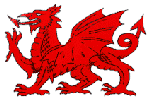
Miscellaneous photos

In 1985 a new coal flow started from Toton to Garston Docks on Merseyside. As the Speke Junction men were not trained on the Class 58's a number of crew training turns ran to Llandudno Jct from Speke Jct. 58016 is seen here heading back to Merseyside on one such turn and passes Mostyn on the 21st of August. Note the large number of hopper wagons, used for carrying sulphur, in the background.

47079 "G. J. Churchward" on ballast duty in Rhyl yard, 5-10-1986.

One time Glasgow Blue train No. 303049 is seen being shunted by 47372 in Llandudno Jct yard on November 5th 1991. The unit had been in store at Llandudno Junction for a couple of years since being declared surplus from the Manchester area. It was on its way to Clacton where it was converted into a test train for Network South East.
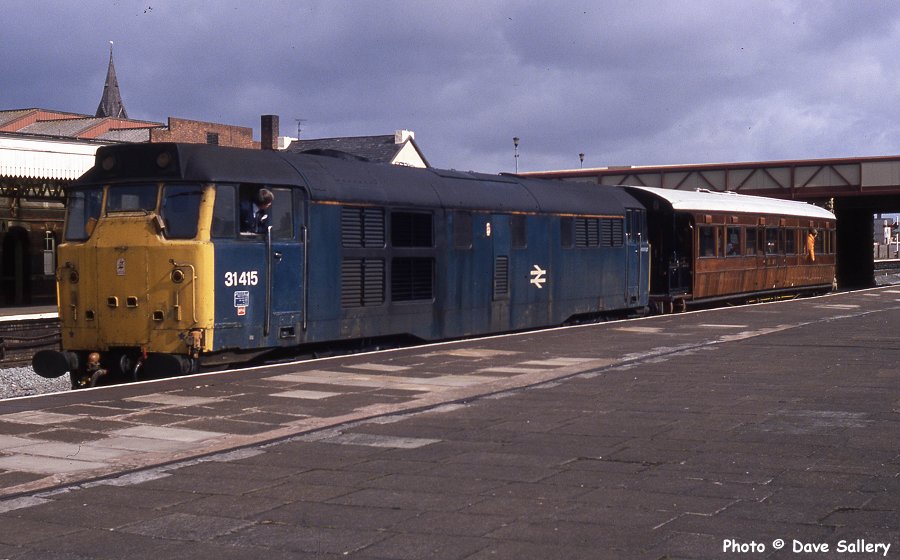
31415 in seen with Great Eastern Railway saloon No. 1 at Rhyl on 9th September 1990. The occasion was a visit to North Wales by the Railway Heritage trust.
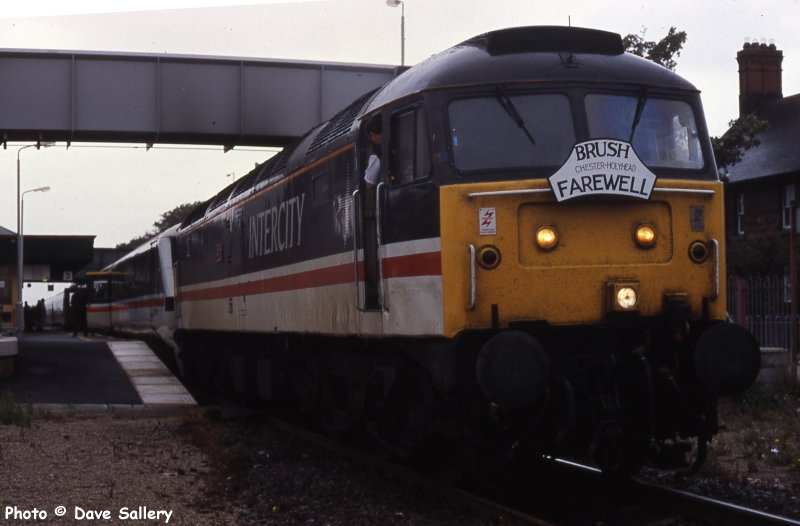
On the day before HST's took over London - Holyhead turns, 47509 "Albion" stands at Prestatyn on the "last" loco hauled Holyhead - Euston train. The date is 29th September 1991. This was before the 37's were even being considered for North Wales duties and it did really seem like the end of an era. The headboard reads "Brush, Chester - Holyhead Farewell". In May 2004, Virgin Trains replaced their last HST's in North Wales with class 47's as a stopgap before the Voyagers arrived.
On the 26th of February 1990, the North Wales coast suffered one of its worst attacks by the sea. National news was made as Towyn, between Rhyl and Abergele, was inundated by floodwater up to 6 feet deep when the sea wall collapsed. Much of Towyn was evacuated and the clear-up took 18 months.
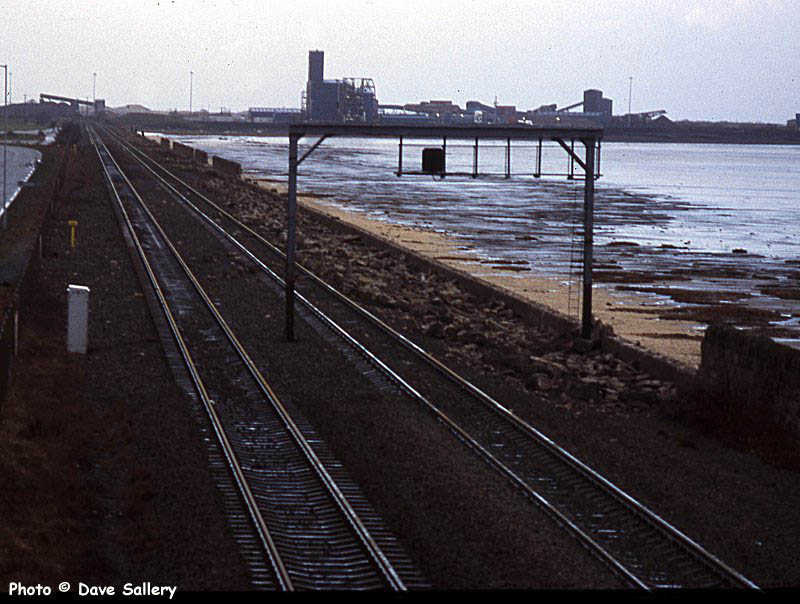
Besides Towyn further flooding affected the railway between Mostyn and Talacre. The photograph above shows the remains of the sea wall near Mostyn with Point of Air colliery in the background. A mile and a half of this LNWR built wall had been destroyed by the morning tide. As the gale continued to blow, further damage was caused and both lines were left without ballast.
The line was closed for five days and a class 156 unit was trapped in Rhyl. A rail shuttle service ran to Flint from Chester with a replacement bus service beyond as far as Llandudno Junction.
The photo below was taken a month later, from a passing train, and shows the sea wall temporarily repaired with sandbags and the track reballasted. A new and higher concrete wall was erected in the summer. Extensive flood prevention measures have since been carried out along virtually the whole of the coastline.


This is Llanfairfechan station on 2nd June 1984 quietly awaiting its fate. The station buildings were demolished a couple of years later during construction of the North Wales Expressway - the A55. The site of the buildings is now the Chester bound carriageway although the footbridge remains and has been refurbished. The only common reference point today is Penmaenmawr mountain visible above the trees to the left. Other stations on the coast which no longer retain any trace of their original buildings are Shotton, Deganwy, Conwy, Rhosneigr and Holyhead.

47645 on its way to Blaenau Ffestiniog to be named 'Robert F Fairlie', passes Abergele on the 1st of May 1986.
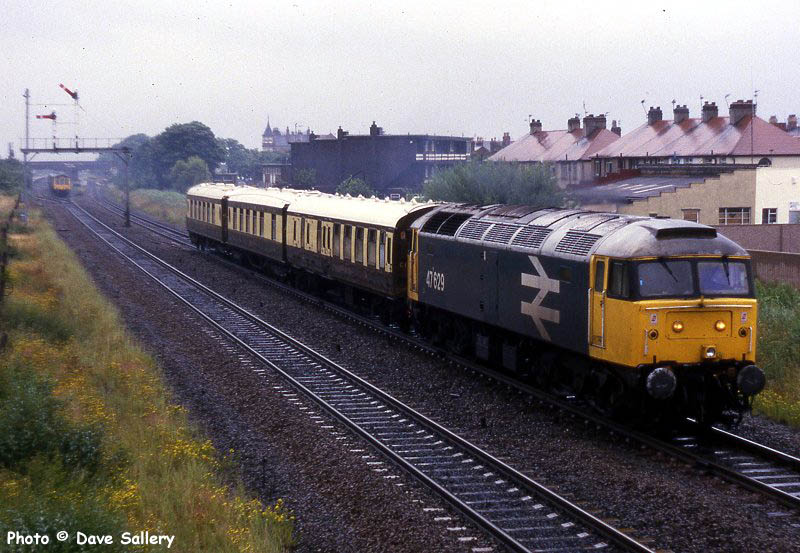
47629 at Prestatyn on July 4th 1988. The train is a short-lived pullman luxury tour operated by VSOE.

40122/D200 storms through Balderton between Chester and Wrexham on the second "Conwy Crusader" railtour on the 21st of April 1984. This section of route is now a single line.
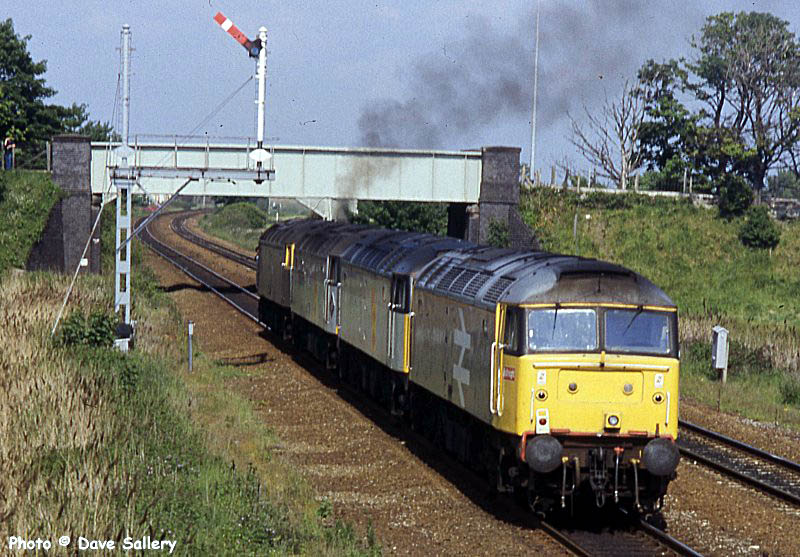
This cavalcade of 47051, 060, 377 and 186 are on their way from Holyhead to Crewe diesel depot. They are seen restarting from a signal check at Prestatyn, 3rd June 1986.
A Class 47 miscellany